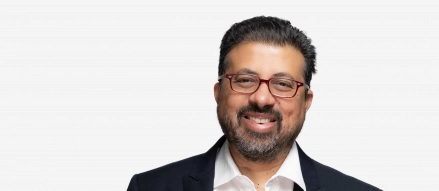
A balancing act: risk and opportunity with ESG transformation
Perspectives
A balancing act: risk and opportunity with ESG transformation
Fri 12 Jan 2024
With the legal landscape tightening environmental, social and governance (ESG) requirements across various territories, mid-market consumer businesses are at a crossroads. How do they meet the ESG challenge and grasp the opportunity on offer, but without putting their existing business model at risk. For businesses in the sector, having a robust risk management process in place is vital to achieving a successful ESG transformation.
According to Michel Kee, a Partner at Mazars in The Netherlands, “many businesses are used to executing a strategy and managing its performance by setting targets”. What is as important for some is to marry that with risk management. “There is a good opportunity to make risk more explicit which, in turn, complements performance management.”
To compliment this, Dan Breger, Associate Director at Mazars in the UK, often starts with “a strategic business impact analysis” when he works with clients in this area. “As part of that we challenge the leadership of the business to really articulate its strategy and the perceived risks and emerging themes,” he says. “It’s especially important for a consumer business to do that because something is always changing – whether it’s the cost of living or availability of supply.”
Risk management steps
The risk management steps a business should go through can be broken into ten key areas, outlined by Keeran Madhav, Director at Mazars in South Africa:
- Establish a clear set of objectives and scope. The objectives of the risk assessment should be clearly defined and all risks identified and their associated impacts.
- Assemble a team that holds expertise across different areas of the business. A cross-functional team of individuals with expertise across different areas of work should be introduced.
- Identify the risks immediately which can include market, operational and financial.
- Assess the risks – all known risks should be weighed according to the likelihood of occurrence and associated business impact.
- Prioritisation of risks – risks must be prioritised based on severity and overall consequence to the business.
- Implement risk mitigation strategies for those identified as a high priority. Strategies can include risk avoidance, reduction and sharing.
- Establish a risk monitoring and reporting system that allows risks to be closely tracked.
- Continuous communication and training. Communicate to all employees on a regular basis the results of the risk assessment and provide adequate training programmes to help mitigate risks.
- Implement compliance and governance to ensure any process that is adopted aligns with any industry regulations that are relevant.
- Seek help from external parties. Where appropriate, businesses should consider third party assistance for an independent perspective and input.
Following those steps has a lot of advantages for a mid-market business, according to Michel. “A business’s decision making will be better, and it can also have a more fruitful dialogue about performance and risk in tandem. There is also less scope for surprises, because a crisis is always around the corner – especially for consumer businesses who often have to do product recalls.” Being able to do a recall and implement the underlying communication plan quickly and effectively can also help enhance a business’s reputation.
However, Keeran adds that doing a risk assessment is not enough – it should be an on-going process embedded into the business agenda. “Businesses need to ensure that the process is integrated into its overall strategic plan and objectives,” he says. “They should then look to review, change, and update the risk assessment on a regular basis. That allows a company to adapt to market changes and mitigate any emerging risks.”
For Michel, there are other pitfalls a mid-sized business should try to avoid. “Risk should not become an objective in itself – it should always be supportive to management decision making to help embed it in the process,” he says. “It should also not be owned in isolation by risk specialists; it should be clearly owned by management. By all means have a risk manager to facilitate or challenge it, but it definitely shouldn’t exist in a silo.”
“There’s an old adage: if you are not prepared to take the risk, you are going to lose the opportunity as well,” Dan says. For many mid-market consumer businesses, that balancing act is the key to a successful ESG transformation.
For more information on our global consumer report, or how Mazars can help you to transform your business, please get in touch.
Download ‘Sustainable, smart, and synchronised















